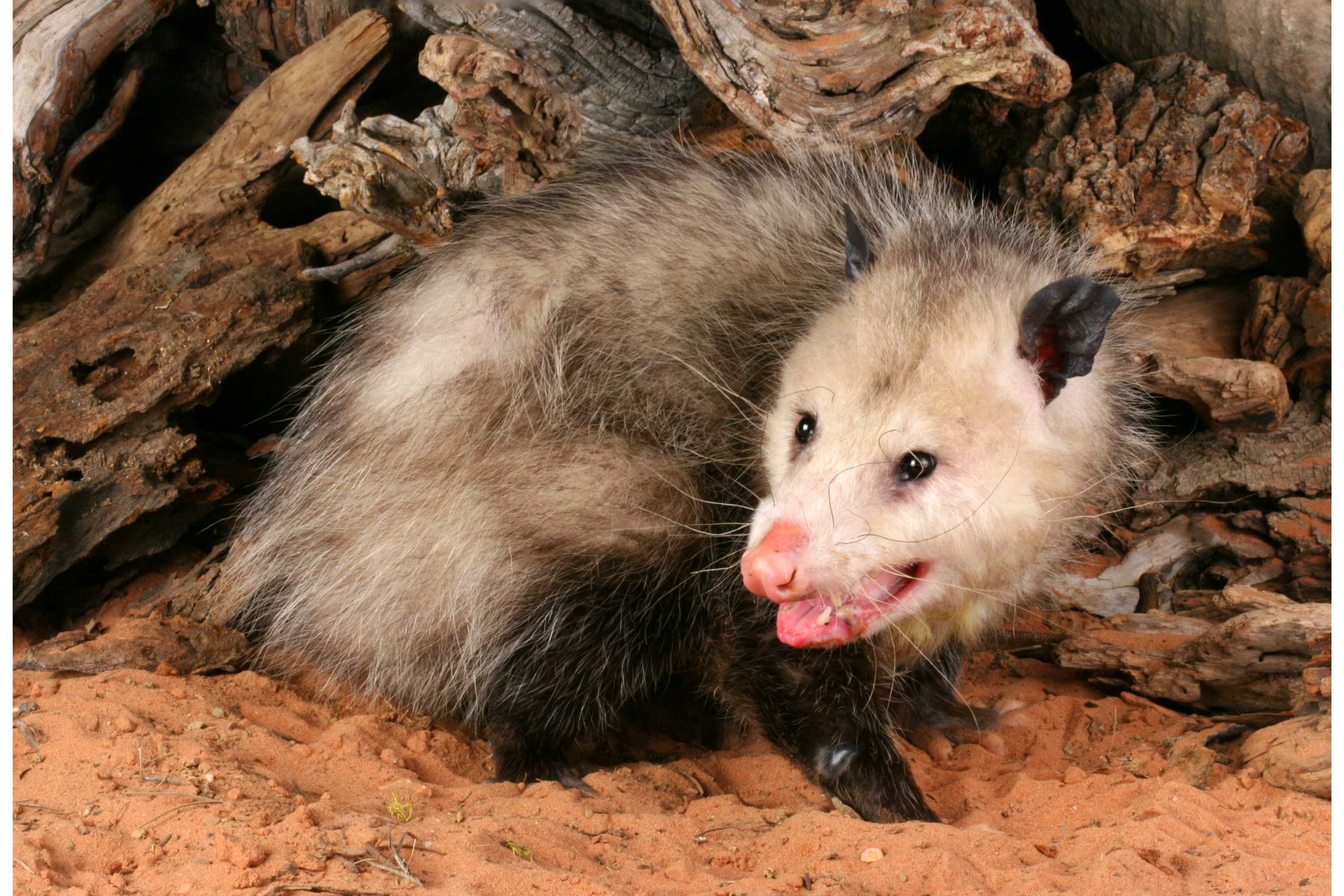Common opossum
(Didelphis marsupialis)

Description
The common opossum (Didelphis marsupialis), also called the southern or black-eared opossum or gambá, and sometimes called a possum, is a marsupial species living from the northeast of Mexico to Bolivia (reaching the coast of the South Pacific Ocean to the central coast of Peru), including Trinidad and Tobago in the Caribbean, where it is called manicou. It prefers the woods, but can also live in fields and cities. This opossum is found in tropical and subtropical forest, both primary and secondary, at altitudes up to 2200 m They use a wide range of nest sites. Most commonly they will create one in the hollow of a tree; however, they will also dig a burrow or nest in any dark location if nothing else is suitable (which often gets them in trouble with humans). Opossums enjoy denning underground, but do not spend as much time underground when it is dry season. Common predators of the opossum are humans, house pets (ex: dogs and cats), and birds. When they are in danger, they act dead, also called, 'playing opossum. The common opossum is similar in size to a house cat. The fur of the opossum is actually yellow in the under-fur, but is hidden by the longer black guard-hairs that cover it, while the tail, fingers, and face are lighter "with the tail being without fur, somewhat similar to a giant rat tail".It can measure nearly 20 inches long. It has large ears that are usually black, and its face is usually a pale peach in color, with black whiskers and eyes that reflect reddish in light. With a body length of nearly a foot, and a tail that can reach almost two feet, the common opossum is one of the larger members of its family. An adult can weigh more than three pounds. They are members of the genus Didelphis, which contains the largest American opossums, and the order Didelphimorphia, to which all Western hemisphere opossums belong. The common opossum is currently not an endangered species. The common opossum lives for around 2-4years. Common opossums have a broad ability to adapt to environmental changes, and their teeth allow them to eat many different types of food, which is obtained mostly on the ground. They can eat small insects, small animals, fruits, vegetables, and also carrion. Their ability to digest almost anything edible gives them a broader range than a human.
Taxonomic tree:







